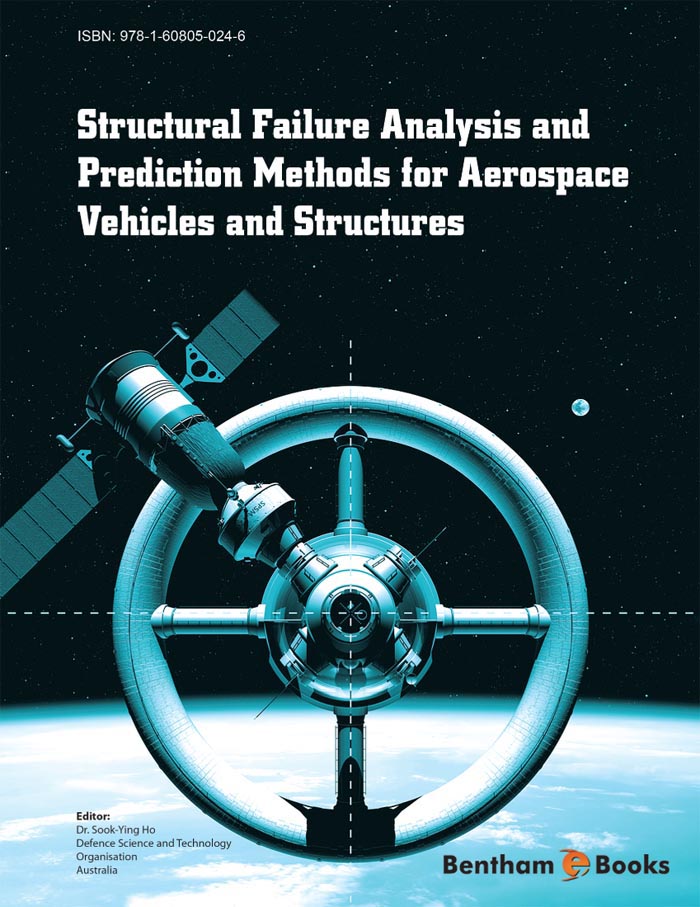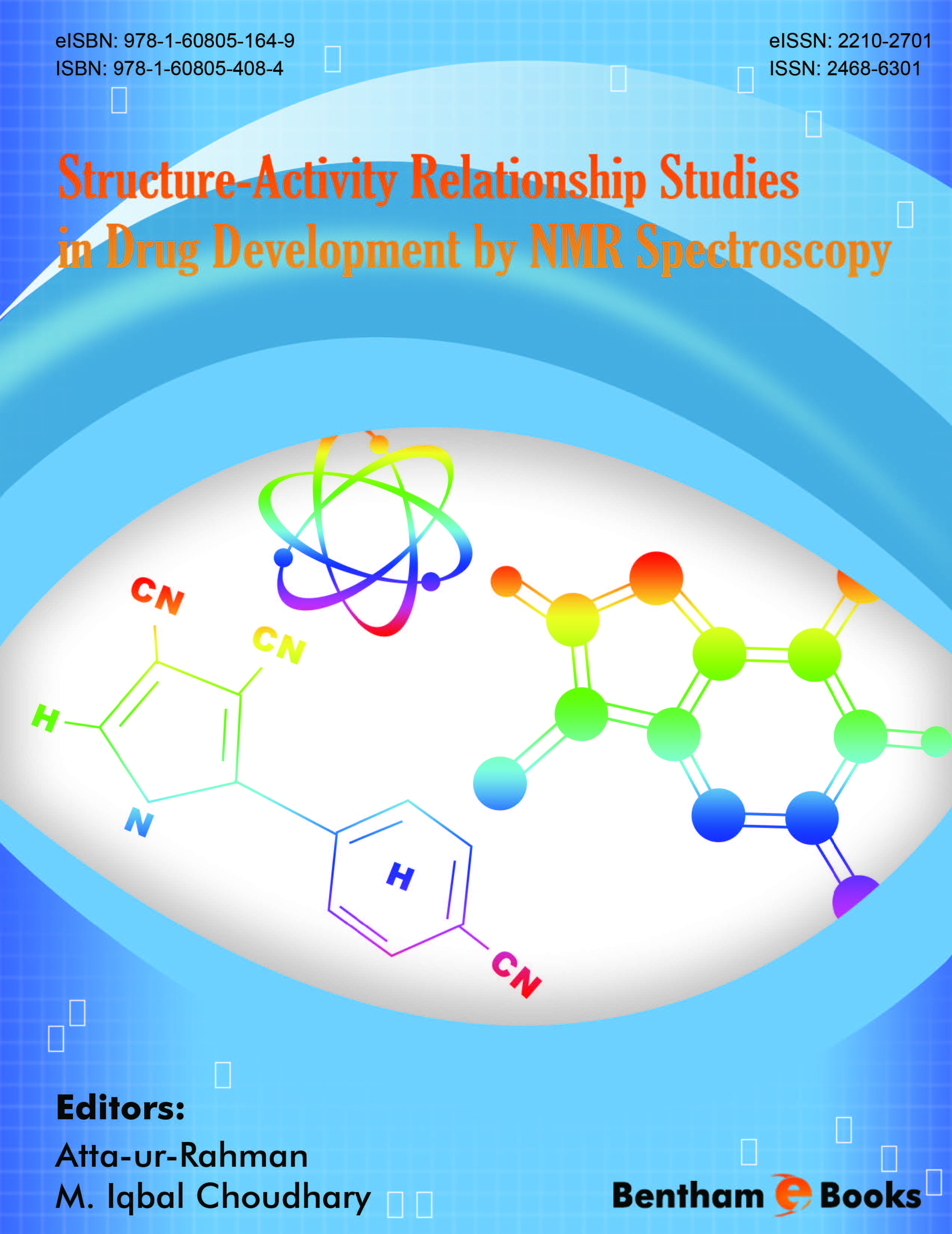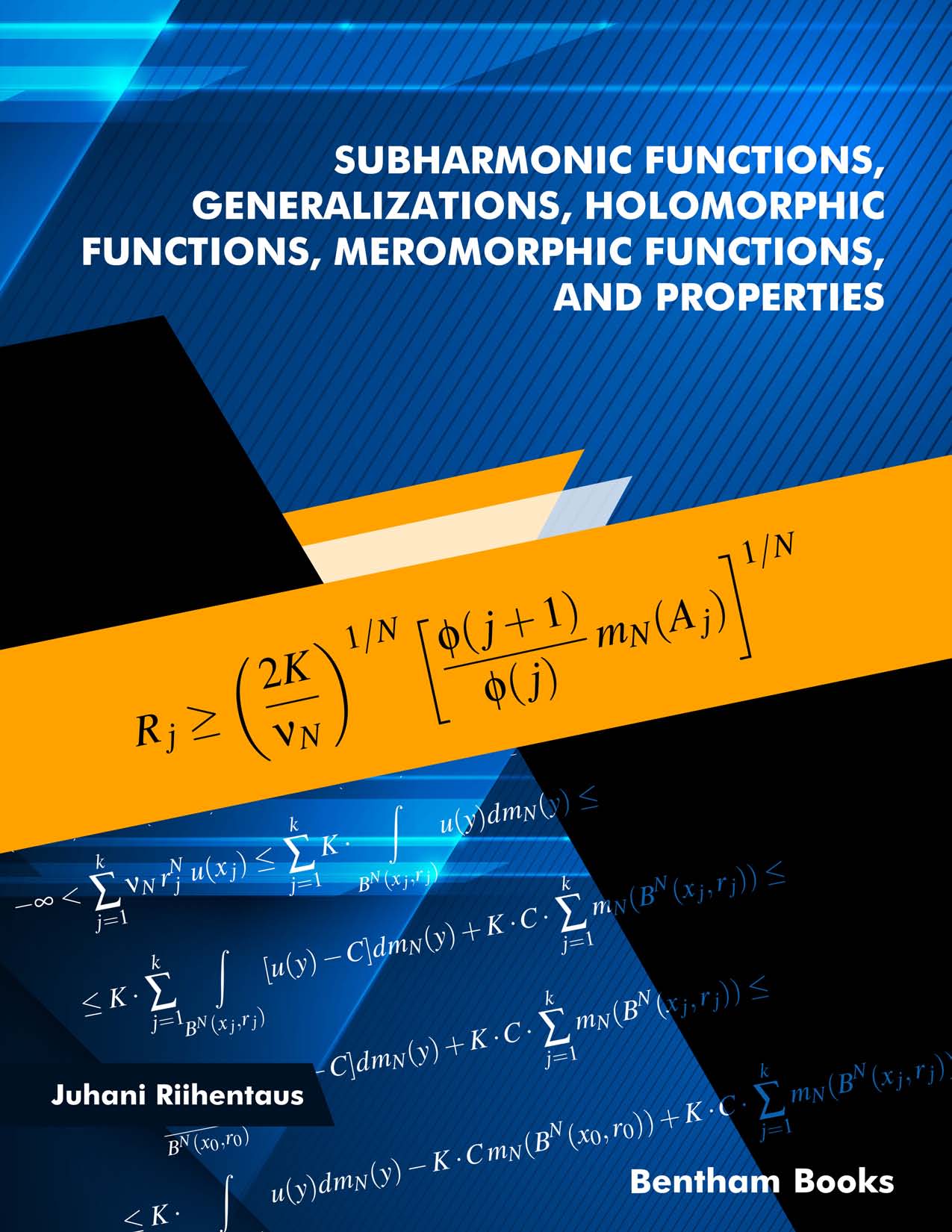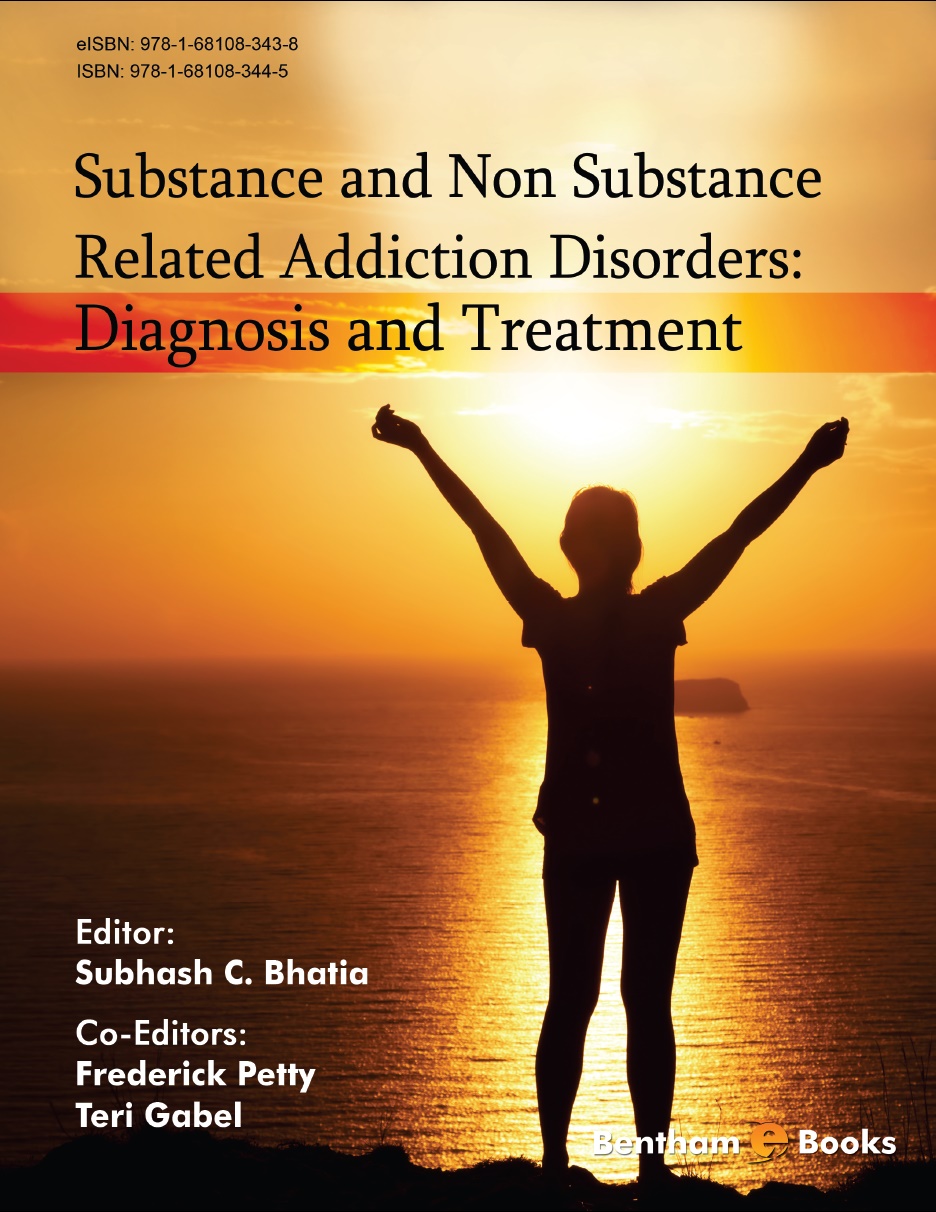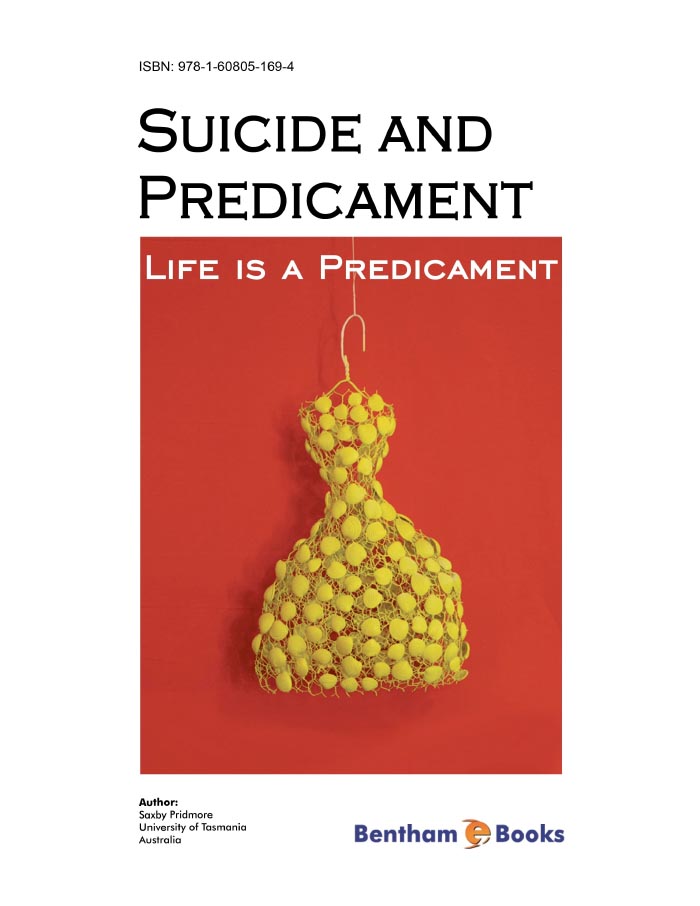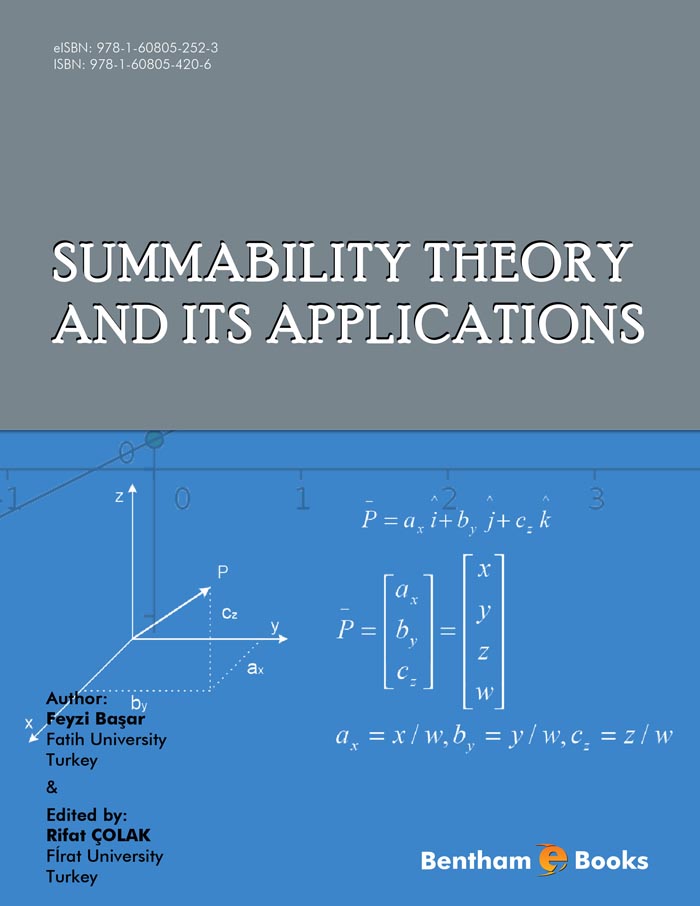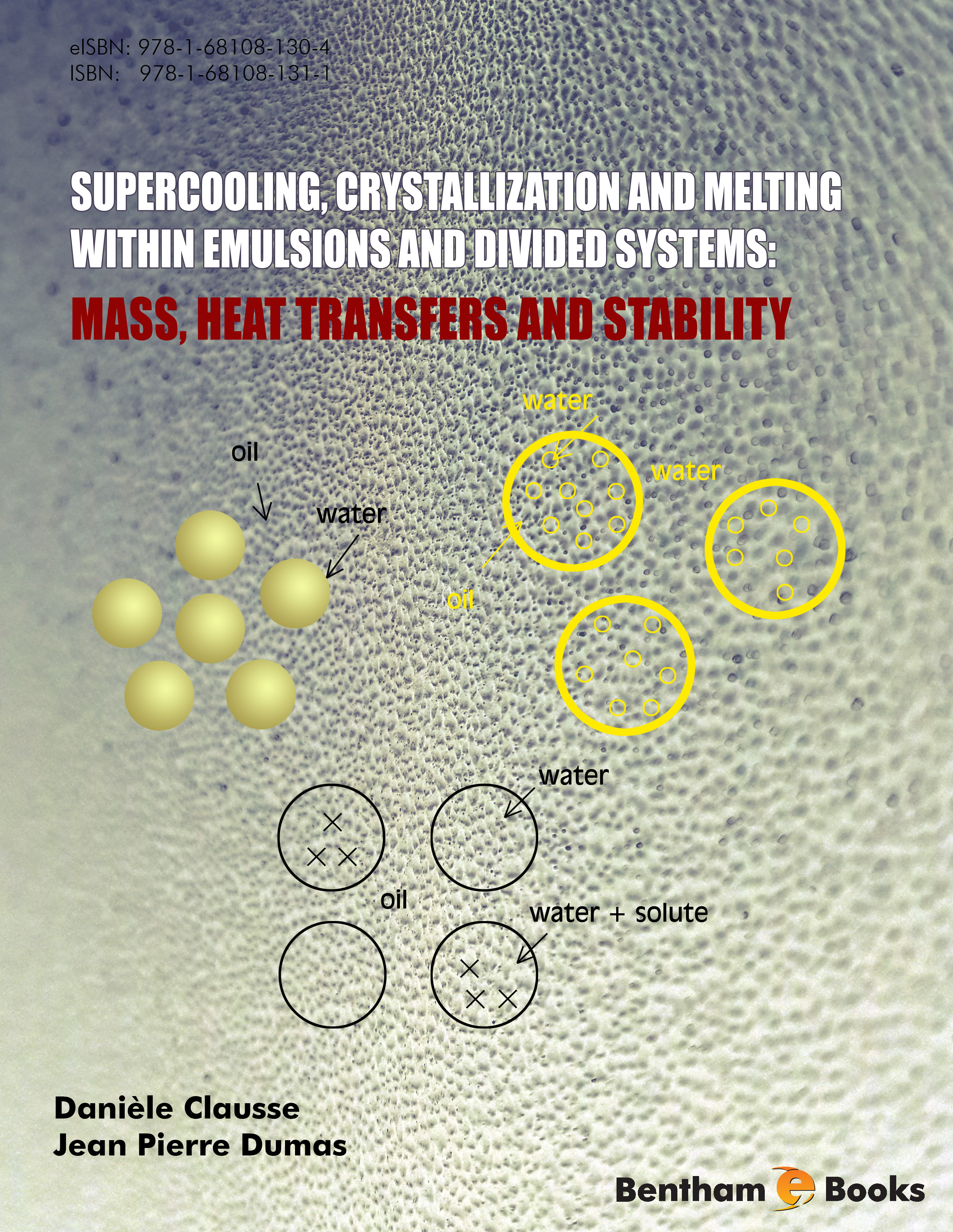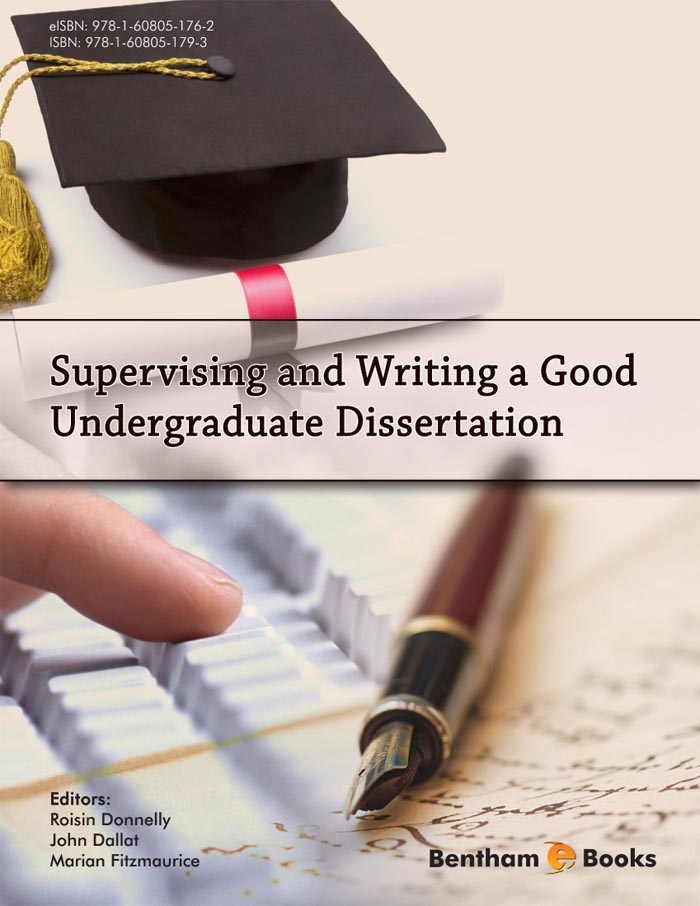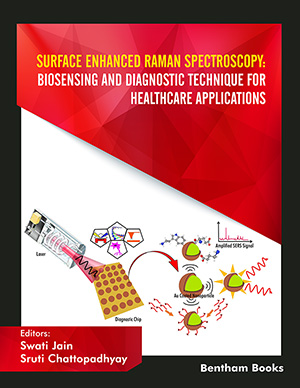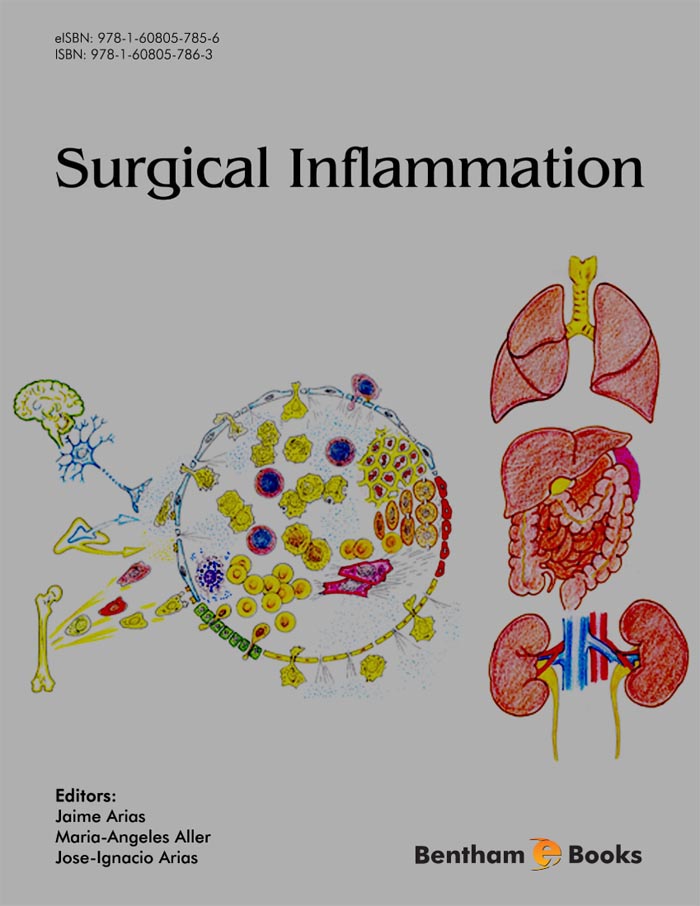Bentham Science Publishers
Bentham Science Publishers is a major publisher of more than 100 peer-reviewed science, technology and medical (STM) journals, along with a rapidly growing collection of eBooks. Since 1993, Bentham Science Publishers has been catering to the information needs of the pharmaceutical, engineering, biomedical and medical research community.1581 - 1600 of 1803 results
-
-
Stem Cells in Clinical Application and Productization
More LessStem cells with self-renewal and multi-lineage differentiation potential have potential for developing medicines for a range of refractory and recurrent disease. This book mainly focuses on the landscape of the biological properties and translational research of stem cells types, including hematopoietic stem cells (HSCs), neural stem cells (NSCs) and mesenchymal stem/stromal cells (MSCs).
The book also introduces readers to the current updates and development prospects of stem cells in singular or combination therapies with advanced biomaterials and technological innovations towards large-scale standardization and productization.
Key Features:
- Introduces readers to stem cell biology and tissue engineering
- Covers innovations in stem cell therapy and biomaterials
- Includes a brief guide to commercialization of stem cell technology
- Includes references for advanced readers
The contents will strengthen the reader’s understanding of stem cell-based therapies. This book is a primer on stem cell and regenerative medicine for a wide readership including students, healthcare professionals, researchers and general readers.
-
-
-
Steroids and their Medicinal Potential
More LessSteroids are an important class of biomolecules with diverse roles and functions. Besides being important as structural and signaling molecules, these molecules hold promise against numerous disorders, including cardiovascular conditions, cancer, inflammation and autoimmune disorders. Many investigations have demonstrated that steroidal frameworks may provide lipid solubility, receptor selectivity or membrane binding properties to non-steroidal pharmacophores. However, the therapeutic use of steroids can be dangerous when they're used incorrectly. Additionally, misconceptions about steroids among athletes or recreational users can lead to steroid abuse and poor health outcomes. Steroids and their Medicinal Potential discusses the classification, distribution, biosynthesis, chemical synthesis and semi-synthesis of different steroids. The medicinal potential of each class is exhaustively discussed in different chapters. The latest advances and developments in steroid-based drug discovery are also discussed thoroughly. The book aims to address general questions and concerns about steroids, providing readers a useful resource on the subject. Key Features
-Provides comprehensive coverage on all aspects of steroids including steroid chemistry, biochemistry, medicinal potential, drug discovery and advances in target-binding interactions of steroid-based drugs
-Includes chapters dedicated to anabolic steroids and their abuse
-Designed as an accessible source of information for understanding steroidal drugs with structured chapters
-Includes references for advanced readers
-
-
-
Stochastic Lagrangian Modeling for Large Eddy Simulation of Dispersed Turbulent Two-Phase Flows
More LessUnderstanding the dispersion and the deposition of inertial particles convected by turbulent flows is a domain of research of considerable industrial interest. Inertial particle transport and dispersion are encountered in a wide range of flow configurations, whether they are of industrial or environmental character. Conventional models for turbulent dispersed flows do not appear capable of meeting the growing needs of chemical, mechanical and petroleum industries in this regard and physical environment testing is prohibitive. Direct Numerical Simulation (DNS) and Large Eddy Simulation (LES) have become powerful tools for the investigation of particle-laden turbulent flows with the help of advances in computing resources. The hybrid Eulerian-Lagrangian approach plays a key role in predicting inertial particle dispersion and deposition. This ebook explains the use of stochastic tools to enhance the accuracy of the Eulerian-Lagrangian large eddy simulation of particle-laden turbulent flows of practical interest. The book should be a useful resource for chemical, mechanical, petroleum and environmental engineering postgraduates and researchers interested in applying tractable yet powerful numerical tools to solve problems involving multiphase flows.
-
-
-
Stress Response and Immunity: Links and Trade Offs
More LessWhen environmental conditions deviate from the optimal range, stress ensues. Stress response is a set of reactions that allow the organism to adjust and survive adverse conditions. Stress can be physical, such as extreme temperature, radiation, injury, or psychological, caused by perceived danger or deprivation. Every living cell has biochemical mechanisms to cope with physical stress. These mechanisms show a degree of similarity among several types of living organisms.
Stress Response and Immunity: Links and Trade Offs explores the functional and evolutionary connections between stress response and immunity. The book introduces the reader to the concept of stress and subsequently examines the connection between stress response and immunity at various evolutionary stages of living organisms - from bacteria to humans. The book also features chapters dedicated to the role of tumor suppressor genes and the immune system of the brain.
The information presented in this reference demonstrates the profound effects of physical and psychological stress on human health. Readers with basic knowledge of molecular biology will learn about the interesting facets of stress responses and the evolutionary trade offs observed in different life forms.
-
-
-
Structural Failure Analysis and Prediction Methods for Aerospace Vehicles and Structures
More LessThis book deals with structural failure (induced by mechanical, aerodynamic, acoustic and aero-thermal, loads, etc.) of modern aerospace vehicles, in particular high-speed aircraft, solid propellant rocket systems and hypersonic flight vehicles, where structural integrity, failure prediction and service life assessment are particularly challenging, due to the increasingly more demanding mission requirements and the use of non-traditional materials, such as non-metallic composites, in their construction. Prediction of the complex loading environment seen in high-speed operation and constitutive / fracture models which can adequately describe the non-linear behaviour exhibited by advanced alloys and composite materials are critical in analyzing the non-linear structural response of modern aerospace vehicles and structures. The state-of-the-art of the different structural integrity assessment and prediction methodologies (including non-destructive structural health monitoring techniques) used for the structural design, service life assessment and failure analysis of the different types of aerospace vehicles are presented. The chapters are written by experts from aerospace / defence research organizations and academia in the fields of solid mechanics, and structural mechanics and dynamics of aircraft, rocket and hypersonic systems. The book will serve as a useful reference document containing specialist knowledge on appropriate prediction methodologies for a given circumstance and experimental data acquired from multi-national collaborative programs.
-
-
-
Structure-Activity Relationship Studies in Drug Development by NMR Spectroscopy
More LessDrug discovery is still a process which involves screening of a large number of chemical compounds against a defined biological target. However, this approach is now being gradually replaced by more rational and knowledge-based approaches, such as in sillico screening and target based drug development. Increase in the cost of development of NME (New Molecular Entities) and productivity crises in pharmaceutical industry are catalyzing this change.
Spectacular advances in the field of use of NMR spectroscopy in drug discovery and development have been triggered by a greater understanding of the disease process at the molecular level.
While NMR is generally valued as an important tool for structure determination and more recently as a non-invasive diagnostic technique, its potential in drug discovery is based on its capacity to map molecular interactions at the atomic level. Chemical shifts, cross relaxation, and exchange of protons are among the NMR parameters which are highly sensitive to the exact molecular environments , and therefore yield information about how a small molecule (candidate compound) binds to a target protein (receptor) or to other macromolecules. These NMR parameters are also used to exactly map the part of the macromolecular target to which the ligand is bound. As a result, NMR is now extensively used as an efficient tool in the drug (ligand) discovery and optimization process or for the assessment of target drug ability. Recent advances in NMR hardware and methodology have provided a fresh impetus in the area of pharmaceutical innovation and productivity. This book is aimed to present recent cutting edge knowledge, practices and experiences in this important field.
The book comprises seven scholarly written articles . Mailavaram and Devarakonda in their introductory review skillfully summarize the broad approaches of NMR-based drug discovery . Park and Kim focus on the use of NMR spectroscopic techniques in the study of drug delivery, drug release and other pharmaceutic parameters. Roberto and Marina provide a chronological account of fragment-based drug discovery by using NMR-based screening methods. Specific utilization of NMR-based techniques in the discovery and development of anticancer drugs is reviewed by Solomon and Lee. Ramalho et al. review another fascinating application of NMR in understanding the behavior and radio sensitizing properties of bioreductive drugs. Zoppetti comprehensively reviews the application of NMR spectroscopy in the study of host-guest cyclodextrin complexes, particularly their use as drug delivery vehicles. A concise review is contributed by Nhat and Hong on recent advances in the field of application of NMR in structure-activity relationship study of nanostructure drugs. These contributions of outstanding group of experts make this a very useful treatise of highly readable articles. Our felicitations and gratitude goes to them. The book will hopefully fulfill an important need of the scientific community by providing comprehensive reviews on cutting edge topics written by leading experts in the field.
We extend our warmest thanks to the staff of Bentham Science Publishers, particularly, to Mr. Mahmood Alam (Director), Ms. Taqdees Malik (Editorial Assistant) and Ms. Sadaf Idrees Khan (Composer) for undertaking the important task of closely coordinating with the contributors and preparing the content lists, index, etc.
-
-
-
Subharmonic Functions, Generalizations, Holomorphic Functions, Meromorphic Functions, and Properties.
More LessThis book explains different types of subharmonic and harmonic functions. The book brings 12 chapters explaining general and specific types of subharmonic functions (eg. quasinearly subharmonic functions and other separate functions), related partial differential equations, mathematical proofs and extension results. The methods covered in the book also attempt to explain different mathematical analyses such as elliptical equations, domination conditions, weighted boundary behavior. The book serves as a reference work for scholars interested in potential theory and complex analysis.
-
-
-
Substance and Non Substance Related Addiction Disorders: Diagnosis and Treatment
More LessSubstance and Non substance Related Addiction Disorders: Diagnosis and Treatment is an accessible handbook about the two main types of addiction disorders. It is divided into three sections which cover 1) the scientific underpinnings of addiction disorders (neurobiology, addiction neural reward pathways, genetic and psychosocial basis of addiction, screening and treatment), 2) information about substances commonly used by addicts (pharmacology, diagnostics and treatment considerations) and 3) current understandings of the diagnosis and treatment of behavioral problems (such as gambling), respectively.
Key features:
-covers both substance abuse and behavioral problems
-uses a reader friendly format with a patient education handout style
-includes key learning points listed in each chapter
-includes clinical vignettes which outline brief history, evaluation, diagnostic considerations with successful pharmacological, psychological and social interventions
-includes references in each chapter
The handbook meets the information needs of medical students and professionals (family physicians, nurses, addiction therapists, psychiatry residents, and other health care professionals) interested in the primary care of patients afflicted with addiction disorders.
-
-
-
Subwavelength Optics: Theory and Technology
More LessFrom the beginning of this century, there has been a dramatic increase in interest in the study of surface plasmon polaritons-based metallic subwavelength structures and learning. This is a refreshing concise book on issues and considerations in designing, nanofabrication and characterization of subwavelength plasmonic structures as well as their applications in imaging, superfocusing, semiconductor lasers, data storage, optical communications, biosensing, and immunoassays. The book can serve as a textbook for education and training as well as a reference book that aids research and development in those areas integrating light, photonics, nanotechnology, semiconductors, chemistry, and biology. Another aim of the book is to stimulate the interest of researchers, engineers, and businessmen to foster collaboration through multidisciplinary programs in this frontier science, leading to development and transition of the resulting technology. Both basic and applied aspects are presented in this book. Many illustrative worked-out examples and instructive exercises are given, which should prove to be particularly useful.
-
-
-
Suicide and Predicament: Life is a Predicament
More Less"Suicide and Predicament: the medical model of suicide is incomplete" takes a broad view of suicide. It argues that a large proportion of people who suicide do not have a mental disorder, and therefore it is essential to know about the predicaments of people. The book draws on sociology and takes issue with the medicalization of distress and suicide. It discusses genetics and draws attention to the importance of alcohol in suicide. It takes as examples, 127 suicide cases found in public record. Unique features include 1) predicament model, 2) pathways model, 3) typology of suicide, and 4) prevention initiatives.
-
-
-
Suicide: A Global Perspective
More LessIn the year 2000, approximately one million people died from suicide: a "global" mortality rate of 16 per 100,000, or one death every 40 seconds.
In the last 45 years suicide rates have increased by 60% worldwide. Suicide is now among the three leading causes of death among those aged 15-44 years (both sexes); these figures do not include suicide attempts up to 20 times more frequent than completed suicide. Suicide worldwide is estimated to represent 1.8% of the total global burden of disease in1998, and 2.4% in countries with market and former socialist economies in 2020. Although traditionally suicide rates have been highest among the male elderly, rates among young people have been increasing to such an extent that they are now the group at highest risk in a third of countries, in both developed and developing countries. Mental disorders (particularly depression and substance abuse) are associated with more than 90% of all cases of suicide; however, suicide results from many complex sociocultural factors and is more likely to occur particularly during periods of socioeconomic, family and individual crisis situations (e.g., loss of a loved one, employment, honour).
The economic costs associated with completed and attempted suicide are estimated to be in the billions of dollars. One million lives lost each year are more than those lost from wars and murder annually in the world. It is three times the catastrophic loss of life in the tsunami disaster in Asia in 2005. Every day of the year, the number of suicides is equivalent to the number of lives lost in the attack on the World Trade Center Twin Towers on 9/11 in 2001.
Everyone should be aware of the warning signs for suicide: Someone threatening to hurt or kill him/herself, or taking of wanting to hurt or kill him/herself; someone looking for ways to kill him/herself by seeking access to firearms, available pills, or other means; someone talking or writing about death, dying or suicide, when these actions are out of the ordinary for the person. Also, high risk of suicide is generally associated with hopelessness; rage, uncontrolled anger, seeking revenge; acting reckless or engaging in risky activities, seemingly without thinking; feeling trapped – like there’s no way out; increased alcohol or drug use; withdrawing from friends, family and society, anxiety, agitation, unable to sleep or sleeping all the time; dramatic mood changes; no reason for living; no sense of purpose in life.
Table 1: Understanding and helping the suicidal individual should be a task for all.
Suicide Myths
How to Help the Suicidal Person
Warning Sights of Suicide
Myth: Suicidal people just want to die.
Fact: Most of the time, suicidal people are torn between wanting to die and wanting to live. Most suicidal individuals don’t want death; they just want to stoop the great psychological or emotional pain they are experiencing
-Listen; -Accept the person’s feelings as they are; -Do not be afraid to talk about suicide directly -Ask them if they developed a plan of suicide;
-Expressing suicidal feelings or bringing up the topic of suicide; -Giving away prized possessions settling affairs, making out a will; -Signs of depression: loss of pleasure, sad mood, alterations in sleeping/eating patterns, feelings of hopelessness;
Myth: People who commit suicide do not warn others.
Fact: Eight out of every 10 people who kill themselves give definite clues to their intentions. They leave numerous clues and warnings to others, although clues may be non-verbal of difficult to detect.
-Remove lethal means for suicide from person's home -Remind the person that depressed feelings do change with time; -Point out when death is chosen, it is irreversible;
-Change of behavior (poor work or school performance) -Risk-taking behaviors -Increased use of alcohol or drugs -Social isolation -Developing a specific plan for suicide
Myth: People who talk about suicide are only trying to get attention. They won’t really do it.
Fact: Few commit suicide without first letting someone know how they feel. Those who are considering suicide give clues and warnings as a cry for help. Over 70% who do threaten to commit suicide either make an attempt or complete the act.
-Express your concern for the person; -Develop a plan for help with the person; -Seek outside emergency intervention at a hospital, mental health clinic or call a suicide prevention center
Myth: Don’t mention suicide to someone who’s showing signs of depression. It will plant the idea in their minds and they will act on it.
Fact: Many depressed people have already considered suicide as an option. Discussing it openly helps the suicidal person sort through the problems and generally provides a sense of relief and understanding.
Suicide is preventable. Most suicidal individuals desperately want to live; they are just unable to see alternatives to their problems. Most suicidal individuals give definite warnings of their suicidal intentions, but others are either unaware of the significance of these warnings or do not know how to respond to them. Talking about suicide does not cause someone to be suicidal; on the contrary the individual feel relief and has the opportunity to experience an empathic contact.
Suicide profoundly affects individuals, families, workplaces, neighbourhoods and societies. The economic costs associated with suicide and self-inflicted injuries are estimated to be in the billions of dollars. Surviving family members not only suffer the trauma of losing a loved one to suicide, and may themselves be at higher risk for suicide and emotional problems.
Mental pain is the basic ingredient of suicide. Edwin Shneidman calls such pain "psychache" [1], meaning an ache in the psyche. Shneidman suggested that the key questions to ask a suicidal person are ‘Where do you hurt?’ and ‘How may I help you?’. If the function of suicide is to put a stop to an unbearable flow of painful consciousness, then it follows that the clinician’s main task is to mollify that pain. Shneidman (1) also pointed out that the main sources of psychological pain, such as shame, guilt, rage, loneliness, hopelessness and so forth, stem from frustrated or thwarted psychological needs. These psychological needs include the need for achievement, for affiliation, for autonomy, for counteraction, for exhibition, for nurturance, for order and for understanding. Shneidman [2], who is considered the father of suicidology, has proposed the following definition of suicide: ‘Currently in the Western world, suicide is a conscious act of self-induced annihilation, best understood as a multidimensional malaise in a needful individual who defines an issue for which the suicide is perceived as the best solution’. Shneidman has also suggested that ‘that suicide is best understood not so much as a movement toward death as it is a movement away from something and that something is always the same: intolerable emotion, unendurable pain, or unacceptable anguish.
Strategies involving restriction of access to common methods of suicide have proved to be effective in reducing suicide rates; however, there is a need to adopt multi-sectoral approaches involving other levels of intervention and activities, such as crisis centers. There is compelling evidence indicating that adequate prevention and treatment of depression, alcohol and substance abuse can reduce suicide rates. School-based interventions involving crisis management, self-esteem enhancement and the development of coping skills and healthy decision making have been demonstrated to reduce the risk of suicide among the youth. Worldwide, the prevention of suicide has not been adequately addressed due to basically a lack of awareness of suicide as a major problem and the taboo in many societies to discuss openly about it. In fact, only a few countries have included prevention of suicide among their priorities.
Reliability of suicide certification and reporting is an issue in great need of improvement. It is clear that suicide prevention requires intervention also from outside the health sector and calls for an innovative, comprehensive multi-sectoral approach, including both health and non-health sectors, e.g., education, labour, police, justice, religion, law, politics, the media.
-
-
-
Summability Theory And Its Applications
More LessThe theory of summability has many uses throughout analysis and applied mathematics. Engineers and physicists working with Fourier series or analytic continuation will also find the concepts of summability theory valuable to their research.
The concepts of summability have been extended to the sequences of fuzzy numbers and also to the theorems of ergodic theory. This ebook explains various aspects of summability and demonstrates applications in a coherent manner. The content can readily serve as a useful series of lecture notes on the subject.
This ebook comprises of 8 chapters starting from classical sequence spaces and covering matrix transformations and fuzzy numbers. An accompanying bibliography with extensive references makes this a valuable source of information for readers interested in summability theory as well as other branches of science.
-
-
-
Supercooling, Crystallization and Melting within Emulsions and Divided Systems: Mass, Heat Transfers and Stability
More LessEmulsions (simple, mixed or multiple) are essentially pure substances, aqueous or organic binary solutions. The have a wide range of uses, including industrial cooling and heat transfer processes. This monograph gives a brief overview of supercooling, crystallization and melting processes within emulsions. Differential scanning calorimetrey (DSC) coupled with RX is the main technique used to demonstrate these processes. Temperature readings in this work have been defined taking into account known nucleation laws. These results have been used to show mass transfers occurring within mixed emulsions (solid ripening) or multiple emulsions (composition ripening), gas hydrate formation due to a chemical reaction between water and a diffuse specific compound, these phenomena being described by diffusive models. Other aspects of heat transfer process covered in this book include the latent energy released at crystallizations or absorbed at the melting (which alters the temperature field through emulsions), the kinetics of phase transformations and self-regulation of temperature in nodules containing phase changing materials. This monograph is intended for advanced chemistry graduates as well as industrial and chemical engineers working with cooling and heat transfer systems.
-
-
-
Supervising and Writing a Good Undergraduate Dissertation
More LessThe considerable increase in numbers of students required to complete undergraduate dissertations as part of their curricula demonstrates a clear need for supporting academic staff from a wide variety of disciplines in this area. There has been limited research published in the realm of undergraduate supervision. Therefore, supervision of academic dissertations in an undergraduate setting still remains to be addressed in a comprehensive manner. The overarching theme of this reference work is the convergence of shared understandings, strategies and reflections of undergraduate supervisors from around the world, from many different subject disciplines. There is also a need today for a mapping of the current landscape of undergraduate supervision.
This text is presented through a series of case studies from a wide variety of subject disciplines in the sciences and arts and is enlightened by research perspectives; it comprises of a focus on development needs for supervisors of undergraduate students, using updated information, modeling exercises and interaction in the form of a series of individual activities, along with a selection geared at programme team development in preparing supervisors for their role, choice key readings, and exploration of online resources. This eBook is intended as a guide for academic staff across various disciplines who are involved with dissertation supervision. It is valuable to those in the early stages of their career who may be supervising for the first time; equally, it provides support, guidance and affirmation to those who have supervised over a number of years.
-
-
-
Surface Enhanced Raman Spectroscopy: Biosensing and Diagnostic Technique for Healthcare Applications
More LessSurface enhanced Raman spectroscopy (SERS) is a technique applied in multidisciplinary research. Its use has tremendously grown in the last 40 years owing to improved nanofabrication, biomolecules extraction and sensitive signal acquisition techniques.
This book focuses on the underlying principles of SERS by emphasizing on basic concepts and background information about the subject. Chapters explain the physics of Raman spectroscopy while also indicating its relevance to designing protocols and methodologies for biosensing and imaging. The book gives updated and recent details on colloids and nanostructures, their fabrication, surface engineering and immobilization methods, all in context to SERS based biosensing.
Key Features:
- Covers basic knowledge and new research about surface enhanced Raman spectroscopy (SERS)
- Provides a complete framework on SERS based biosensing with concise chapters
- Focuses on different active molecules critical to SERS and associated developed nanoassemblies
- Presents information about ongoing research on SERS imaging applications
- Highlights bottlenecks of SERS technique in biosensing
- Includes references for further reading
This book serves as a reference book for researchers and academicians and will also provide a reasonable understanding on the topic of SERS to newcomers irrespective of their background in a simple manner. The book is of interest to all readers within the scientific community involved with Raman spectroscopy, including chemists, physicists, biologists, material scientists as well as biomedical engineers.
-
-
-
Surface Tailoring of Inorganic Materials for Biomedical Applications
More LessInorganic materials have been used for biomedical applications since many decades. They have been utilized successfully because of easy and economic methods for bulk preparation and industrial manufacturing.
Surface modifications significantly improve the success of these materials and enable us to exploit their application in many innovative fields such as tissue engineering, dentistry, nanocarriers for drugs, medical diagnosis and antifouling technologies. This e-book provides comprehensive information on technologies for development and characterization of successful functionalized materials for biomedical applications relevant to surface modification. It is a suitable reference for advanced students and researchers interested in biomaterials science and medical applications of inorganic substances.
-
-
-
Surgical Inflammation
More LessThis monograph offers the reader an integrated point-of-view about the inflammatory response related to injury, infections and tumors. This integration is based on the hypothesis that the multiple pathophysiological mechanisms making up inflammation represent the re-expression of ontogenic mechanisms during early embryo development as well as the recapitulation of ancestral phylogenetic mechanisms. The relevance of the anti-inflammatory treatments is also highlighted with respect to polytraumatic patients, advances in stem cell research, embryology and the wound healing mechanism.
Readers of this book will have the chance of gaining a unique perspective about of the pathophysiological mechanisms involved in the multiple inflammatory conditions. This integrative concept about inflammation can be applied in biological investigation, as well as in clinical research and translational medicine.
-
-
-
Sustainability Practice and Education on University Campuses and Beyond
More LessCampus activities for sustainable development are an effective way of learning and implementing sustainability in surrounding communities and industry. A college campus is an ideal place to practice and test new ideas and to learn valuable lessons from the results and mistakes. Sustainability Practice and Education on University Campuses and Beyond showcases many ideas and endeavors pursued on college campuses in the form of case studies. These case studies include past, current and projected activities to green college campuses.
Specific topics covered in this book include student-driven and college-driven environmental sustainability programs in undergraduate and graduate classes, issues in teaching environmental sustainability, the LEED certification of universities, issues of shrinking cities, and a comparison of sustainable military bases with college campuses.
Readers will be able to clearly understand the concept of sustainable development through a textbook approach to crazy ideas presented in the book. In addition, the pedagogical challenges in sustainability education mentioned in the book address key issues arising due to the multidisciplinary nature of sustainability curricula.
Sustainability Practice and Education on University Campuses and Beyond is a good resource on sustainability in environmental science courses for college students, faculty and sustainability-related researchers. Decision makers in government and industry positions looking for ideas for promoting sustainable development can also benefit from the contents of this book.
-
-
-
Sustainability Studies: Environmental and Energy Management
More LessSustainability Studies: Environmental and Energy Management is a collection of reviews on topics on sustainability with the objective of informing the reader about the environmental impact of industrialization and the ways technology can be implemented to sustain it.
The book presents 11 chapters that focus on the environmental issues, waste management methods, and green chemistry for environmental-friendly production and construction. 2 chapters bring attention to important concepts that are central to sustainability, namely, environmental justice and climate change. The editors have ensured an adequate balance of theoretical concepts and practical information to give readers a broad overview of environmental sustainability. Each chapter is structured into easy-to-read sections that are suitable for readers who are learning about sustainability as part of their educational curriculum.
Sustainability Studies: Environmental and Energy Management is a primer on sustainability and environmental management for students and academics in environmental science, and engineering courses.
-
-
-
Sustainability: Multi-Disciplinary Perspectives
More LessThe concept of sustainability is inherently multi-disciplinary because it concerns a complex system having economic, technological, ecological, political, and other perspectives. Consequently, any effort in the area of sustainability involves concepts, principles, and methods from engineering, the social sciences including economics and social psychology, the biological sciences including ecology, and the physical sciences. Sustainability: Multi-Disciplinary Perspectives discusses multidisciplinary aspects of the salient concepts, principles, and methods relevant to sustainability in a coherent and comprehensive manner. Topics covered range from green engineering and sustainability metrics to infrastructure and environmental policy.
-





